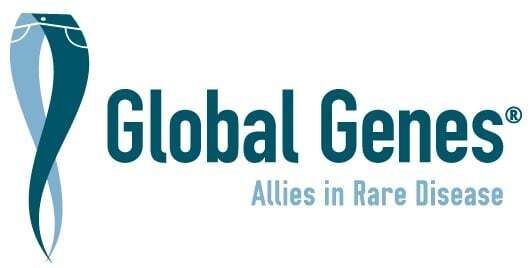From April 2022 CLA Seminar Series - Video
Presenter: Yoav Dori, MD, PhD, Associate Professor of Pediatrics at the University of Pennsylvania, Philadelphia, Pennsylvania
The lymphatic system is an important part of the body that helps fight infection, keeps our fluid levels at normal levels, and moves nutrients. For years, the lymphatic system was called the “Forgotten System” because doctors did not have good ways to look at it, study it, or fix problems in it. Today, there are new tools we can use to check the health of the system. This webinar will describe those new tools and how they can be used to treat central lymphatic system anomalies.
Lymphatic System Anatomy and Flow
T2 imaging is one of the old ways we had to look at the lymphatic system. Doctors could check if the tubes in the lymphatic system were moving fluid well by putting a special dye in them and taking pictures with a machine called an MRI. They would then compare these pictures to understand if fluid was moving the dye in the right direction and at a good pace. This technique had one problem - it could not track the movement of fluid from the liver or the mesentery (the sheet that holds the intestines in place).
1. IH-DCMRL and IM-DCMRL
To understand the health of the liver, Dr. Dori’s team developed a method called intra-hepatic, dynamic contrast MR Lymphangiography (IH-DCMRL). IH-DCMRL is done like T2 imaging – doctors find the lymphatic tubes in the liver, inject the dye, and watch the way fluid empties it out of the liver. Once Dr. Dori’s group understood how to study the liver, they applied those same methods to look at the mesentery. This second technique, called intra-mesenteric, dynamic contrast MR Lymphangiography (IM-DCMRL), also places dye into the mesentery and watches how it leaves the organ.
2. Ultrasound Contrast
Lymph fluid that carries nutrients must travel through the main lymph tube, called the thoracic duct, to get back into the bloodstream. If this duct becomes blocked, lymph fluid will leak into places where it should not be like the chest, abdomen, or into nearby organs.
To check how blocked someone’s thoracic duct might be, Dr. Dori’s group created a technique called Ultrasound Contrast Lymphangiography. This procedure adds a different dye to the lymphatic system and then uses sound waves to create clear pictures of the thoracic duct. The pictures help a doctor understand how plugged the duct is or why a patient might be in pain/have swelling.
3. MRL for Lymphedema
When there is a large fluid buildup in someone’s body because their lymphatic system cannot clear it, they could develop a condition called lymphedema. One historic complication of studying lymphedema is that most dyes seep into other areas of the body and create a blurry picture that cannot be studied. Doctors now use a chemical called Pharamoxitol and certain settings on the MRL machine to take a clear picture of a patient’s lymphatic system.
Lymphatic System Treatment
With new ways to look at the lymphatic system, doctors wanted to find ways to treat the problems they were seeing. Many types of treatments exist, but this lecture focused on treatments when fluid pools in places it should not be.
1. Treatments in the Chest
In the past, people with fluid buildup in or around their lungs often died sooner than those without lung issues. This was because lymph fluid was not moving around the body but flooding the lungs. With modern treatments, patients are more likely to survive a fluid buildup in their lungs or in their chest. Conditions that lead to fluid collection in or around the lungs can include:
- A) “Nutmeg Lung” - Some people can have problems that cause health issues that are caught before birth. Here, the lymphatic vessels in the lungs can swell, making it hard for the fluid to flow where it needs to go. To bypass the blockage, lymph fluid leaks into the space around the lungs. This lung swelling will look like a nutmeg seed on a fetal MRI and thusly was termed “Nutmeg Lung”. Doctors can now prevent fluid leakage by adding an oil called Lipiodol at mouth of the affected vessel that seals off the bad tube – lymph fluid will be directed into healthy vessels instead. By doing the oil treatment and following a low-fat diet for 6 – 12 months after birth, 100% of patients survive nutmeg lung and go on to thrive.
- B) General Chylothorax – Other patients have an issue with fluid in or around their lungs that is not found until later in life. At this point, there could be a large amount of lymph fluid built up that severely limits a person’s quality of life. The first step in treatment in these situations would be screening to figure out where and why there is a leak of lymph fluid. Screening may involve looking at the belly, neural system, mesentery, and liver to determine the best course of treatment. Multiple surgeries may be necessary to remove the fluid, seal off bad vessels, and support the lung depending on the extent of tissue damage.
- C) Plastic Bronchitis – Lymph fluid that seeps into the airways can be especially dangerous if it leads to choking or casting. Casting occurs when lymph fluid coats the inside of the airway and hardens. This blocks the airway and makes it difficult to breathe. In the past, plastic bronchitis was life-threatening, but current treatment can prevent casting in most people. Special glue may be used to repair the leaking vessel.
- D) Chyloptysis – Chyloptysis is a rapid flooding of lymph fluid into the airways; there is no time for the fluid to harden and many patients feel like they are drowning. Treatment for this condition may involve gluing bad tubes closed or removing them completely.
2. Treatments in the Abdomen
Researchers highlighted two problems that cause fluid to trickle into the abdomen – protein-losing enteropathy and ascites.
- A) Protein-losing enteropathy (PLE) – Special tubes called lymphatic channels move fluid from the liver and mesentery to be drained into the thoracic duct. In some people, these channels start to flow the wrong way, creating leaks in the intestine. This leakage is known as protein-losing enteropathy as the body cannot recollect the protein that has been lost. To treat PLE, doctors first need to find the place where the leak is. Blue dye is added to the liver and an MRI helps spot the opening. When the opening is found, doctors may seal off the hole with glue. Research is still being done to better understand how effective this treatment is, but early evidence shows that protein levels stabilize in the months following the procedure.
- B) Ascites – Ascites is the buildup of at least 25mL of fluid in the belly. Fluid can accumulate in many ways, so it is important to screen multiple organ systems to find every source of the leak. Ascites may require repair of many organs and vessels if there is fluid passing through different holes. Based on the patient’s individual situation, draining the fluid, putting a sealant in the holes, medications, or other approaches could be appropriate.










